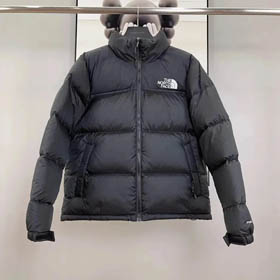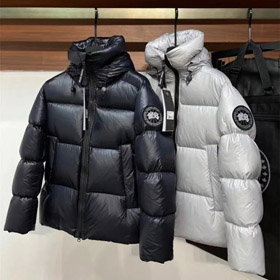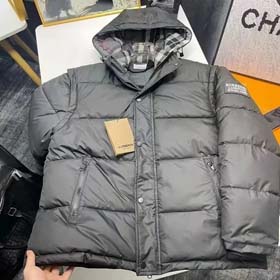The Timeless Legacy of Chanel
2025-04-14
The Timeless Legacy of Chanel
In the pantheon of fashion, few names resonate with as much elegance, innovation, and enduring influence as Chanel. Founded by Gabrielle "Coco" Chanel in 1910, the brand has transcended mere clothing to become a cultural icon, symbolizing sophistication, female empowerment, and timeless style. From its humble beginnings in a Parisian millinery shop to its current status as a global luxury empire, Chanel has continuously redefined fashion norms, leaving an indelible mark on the industry and popular culture.
The Visionary Founder: Gabrielle "Coco" Chanel
Gabrielle Chanel's journey from a modest upbringing to a fashion revolutionary is as captivating as the brand she created. Born in 1883 in Saumur, France, she grew up in an orphanage after her mother's death, where she learned sewing— a skill that would later become her ticket to freedom. The nickname "Coco" emerged during her early years as a cabaret singer, reflecting her playful yet determined personality.
Chanel's design philosophy was a direct rebellion against the restrictive, ornate fashion of the early 20th century. She observed that women were burdened by tight corsets, heavy fabrics, and elaborate decorations, and she sought to create clothing that allowed them to move freely and embrace their natural elegance. In 1910, she opened her first shop on Rue Cambon in Paris, initially selling hats that departed from the excessive styles of the time, favoring simplicity and clean lines. Her motto, "Fashion fades, only style remains," became the guiding principle of her work, emphasizing that true style is about individuality rather than fleeting trends.
The Birth of a Fashion House: Early Years and Innovations
The 1920s marked a pivotal decade for Chanel, as she expanded her business into clothing and introduced revolutionary designs that would shape modern fashion. In 1921, she launched Chanel No. 5, the first perfume to bear a designer's name. The fragrance, with its complex blend of aldehydes and floral notes, was a bold departure from the single-note scents of the era. It became an instant success, symbolizing luxury and femininity, and remains one of the best-selling perfumes in history.
In 1926, Chanel introduced the "Little Black Dress," a simple, elegant garment that revolutionized evening wear. Before then, black was associated with mourning, but Chanel saw its potential as a versatile, sophisticated color that could be worn by women of all ages and occasions. The little black dress, as depicted in Vogue
Another iconic creation was the Chanel suit, introduced in the 1920s. Consisting of a boxy jacket with gold-buttoned cuffs and a matching skirt, it offered a relaxed, masculine-inspired silhouette that contrasted with the 紧身 dresses of the time. Made from lightweight tweed, the suit was both practical and chic, allowing women to move with ease while maintaining a polished appearance. It became a symbol of female independence, challenging traditional notions of femininity and workwear.
Signature Elements: Symbols of Chanel's Identity
Chanel's aesthetic is defined by several signature elements that have become instantly recognizable worldwide. The quilted leather handbag with the interlocking CC logo, first introduced in 1955 (known as the 2.55 bag, named after the month and year of its creation), is a masterpiece of functionality and style. The quilted pattern, inspired by the upholstery of her lover's racing car, adds texture and durability, while the shoulder strap allowed women to carry their bags hands-free, a revolutionary concept at the time.
The camellia flower, a recurring motif in Chanel's designs, holds deep personal significance for the founder. She was drawn to its simplicity and perfection, using it in clothing, jewelry, and accessories. The flower, which does not wither easily, became a symbol of eternal beauty and resilience, mirroring the brand's enduring appeal.
The color palette of black, white, and neutrals, accented by gold and silver, became synonymous with Chanel's minimalist luxury. The brand also embraced androgynous elements, such as tweed jackets, sailor stripes, and masculine-inspired footwear, blending comfort with sophistication and challenging gender norms in fashion.
Post-War Revival and Global Expansion
After World War II, fashion shifted towards opulence and excess, exemplified by Christian Dior's New Look in 1947. Chanel, who had closed her business during the war, returned to the industry in 1954 at the age of 71, defying critics who believed her style was outdated. She reintroduced the tweed suit with a modern twist, emphasizing comfort and elegance over restrictive silhouettes. The collection was a triumph, resonating with women who sought practical yet stylish clothing for the post-war era.
In 1983, Karl Lagerfeld became the creative director of Chanel, a position he held until his death in 2019. Lagerfeld brought a fresh, contemporary vision to the brand while respecting its heritage. He merged classic elements with modern trends, creating iconic collections that featured interlocking CC logos, quilted bags, and tweed suits updated with vibrant colors and unconventional materials. His runway shows became theatrical spectacles, transforming Paris Fashion Week into a global event and cementing Chanel's status as a leader in high fashion.
Under Lagerfeld's guidance, Chanel expanded into new markets, including ready-to-wear, eyewear, watches, and fine jewelry. The brand also embraced technology, launching its first e-commerce platform in 2019 and using social media to connect with younger generations while maintaining its aura of exclusivity.
The Philosophy of Empowerment: More Than Just Fashion
Chanel's legacy extends beyond aesthetics; it is a celebration of female empowerment and individuality. Coco Chanel herself was a trailblazer, challenging societal norms by wearing trousers, smoking in public, and running her own business at a time when women had limited professional opportunities. Her designs gave women the freedom to move, work, and express themselves confidently, reflecting a new era of female independence.
The brand's advertising campaigns have always featured strong, sophisticated women, from actresses like Catherine Deneuve to supermodels like Claudia Schiffer and Lily-Rose Depp. These images convey a message that beauty and style are not about conforming to standards but about embracing one's unique personality. Chanel's fragrances, in particular, have been marketed as symbols of self-expression, with slogans like "A woman who doesn't wear perfume has no future" (attributed to Coco Chanel) emphasizing the power of personal style.
The Enduring Legacy: Chanel in the 21st Century
Today, under the creative direction of Virginie Viard, who worked alongside Lagerfeld for over 30 years, Chanel continues to honor its heritage while evolving with the times. Viard's designs maintain the brand's signature elegance, incorporating soft silhouettes, delicate fabrics, and subtle details that appeal to modern women. The annual Metiers d'Art shows, which highlight the brand's exceptional craftsmanship, showcase the timelessness of Chanel's techniques, from hand-stitched tweed to intricate beadwork.
Chanel's influence can be seen in every corner of the fashion industry. Its emphasis on simplicity, quality, and timelessness has inspired countless designers, while its iconic products remain coveted luxury items. The brand's ability to balance tradition with innovation has allowed it to stay relevant for over a century, the ultimate testament to Coco Chanel's vision that style is not bound by time or trends.
As we look to the future, Chanel continues to set the standard for luxury and elegance, proving that true style is indeed timeless. Whether it's a classic tweed suit, a little black dress, or a bottle of Chanel No. 5, the brand's creations are more than just products—they are symbols of a legacy built on courage, creativity, and the unwavering belief in the power of style to empower and transform.
For more insights into luxury fashion and timeless elegance, visit OOPBUY.



















